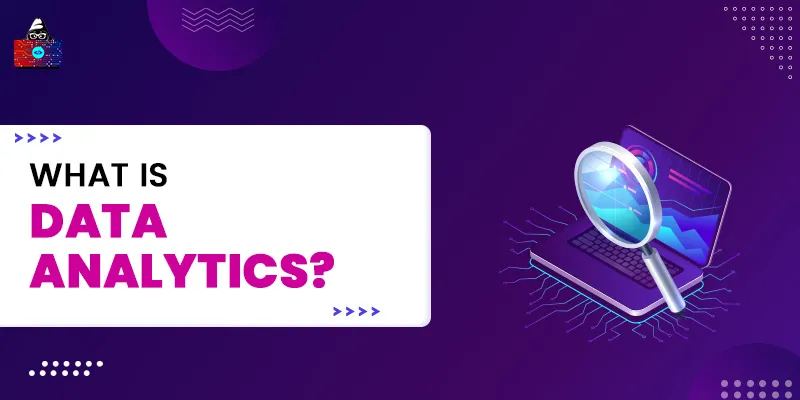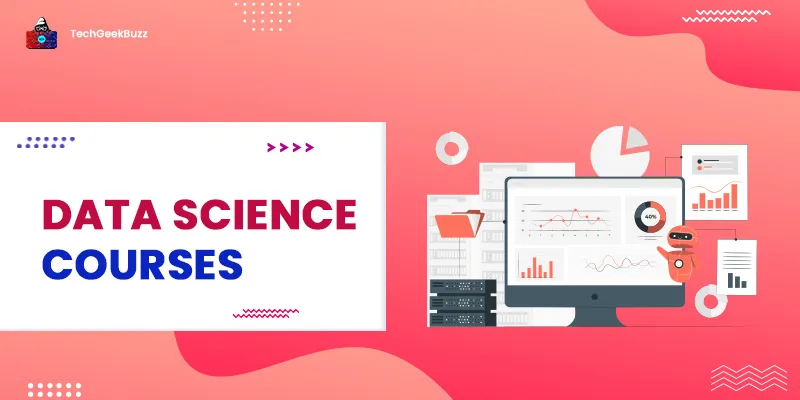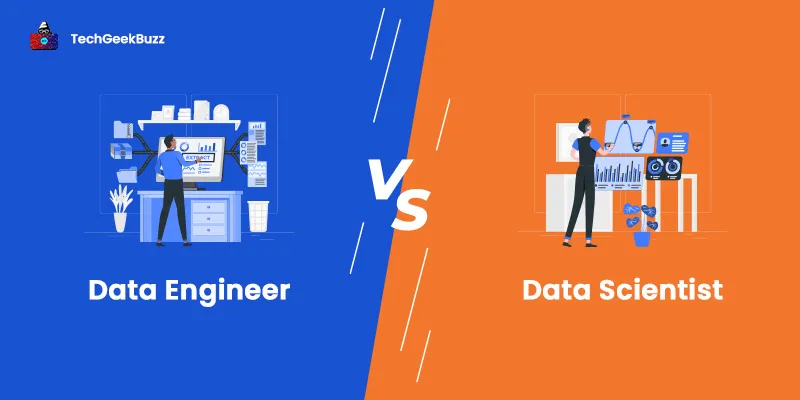The term data analytics has become a buzzword in today's data-driven world. Organizations and companies are generating vast amounts of data in the form of transactional data, log files, customer-related data, and so on. Also, social media platforms contribute a lot in generating large volumes of data. However, only generating data is not sufficient.
Companies should use it to derive actionable insights and make business decisions based on those insights. This is where data analytics comes into the picture.
This article is a quintessential guide to data analytics and highlights its uses. Also, it will help you to become familiar with the detailed process of data analytics, its common applications, and some popular tools. So, without further ado, let’s get started.
What is Data Analytics?
Data analytics is the process of analyzing raw data and exploring hidden patterns, discovering correlations, finding unseen trends, and deriving valuable conclusions from the analyzed and processed data. It helps organizations make informed business predictions and decisions.
We can refer to analytics as an iterative process of collecting and analyzing data. Today, several specialized systems and techniques integrate machine learning algorithms and artificial intelligence to analyze and process data.
Why Use Data Analytics?
1. Improved Decisions
Be it choosing the right content, developing products, or planning marketing campaigns, data analytics eliminates manual effort and guesswork. Also, the insights produced from it help businesses make better decisions, which, in turn, leads to customer satisfaction. Hence, it improves customer retention too.
2. Better Customer Service
Data analytics makes it possible for businesses to tune customer service according to the demands of their customers. When customers get top-notch services as per their requirements, they trust your business, and your relationship with them becomes stronger. So, analytics helps you understand the behavior, interests, and concerns of your customers, which eventually helps you to provide better customer service.
3. Efficient Operations
When you use data analytics, you can have a clear idea of what your customers want. Therefore, you can save time and money on creating content and advertisements that your customers won't find interesting. Also, it becomes easier for you to streamline your business processes and concentrate on enhancing products or services that your customers use.
4. Effective Marketing
You can use data analytics to analyze how your marketing campaigns are performing. The valuable insights you gain from doing so will help you identify visitors that are interested in your products or services.
Data Analytics Process
Data analytics is a systematic approach that involves a sequence of steps. Let us understand all the steps involved in this process with an example. Consider that you run an e-commerce website that has an approximately 1 million customer base. To grow and develop your business, it is essential that you must identify problems in the business process and come up with data-driven solutions, and this can be achieved through analytics.
1. Understand the Problem
The very first step is to identify and understand the business problem. Once you know the problem, you can plan for an effective solution. Alternatively, you can design multiple solutions and then try each one to find one that is the most efficient.
E-commerce companies face various problems, such as providing relevant product recommendations to users, detecting frauds, canceling orders, and predicting the returns of items. Thus, there are various sources for data collection.
2. Data Collection
The next step in the data analytics process is data collection. You need to collect data to address the issues your business is experiencing. It is essential to collect customer-related data and business transactional data from the previous few years. This historical data plays a vital role in developing effective solutions and shaping the future of your business. In the case of e-commerce companies, the data can include information like the total sales made in a specific time frame, most sold products, profits, and so on.
3. Data Cleaning
The data you collect is generally messy, unstructured, and unorganized. Therefore, using such data for analytics is not ideal. So, it becomes essential to clean the collected data. Data cleaning implies eliminating redundant, unwanted, and missing values and fixing incorrect and corrupted data. It is also known as data munging and data wrangling.
4. Data Exploration and Analysis
Performing exploratory data analysis (EDA) on the cleaned data is the next step. It is a process of analyzing data sets to outline their major characteristics. This analysis helps you find out the best way to manipulate and utilize the data sources to get the required answers.
You can use data visualization, business intelligence tools , predictive modeling, and data mining techniques to analyze and visualize the data and predict the outcomes out of it. When you perform exploratory data analysis on the data generated by an e-commerce business, you can:
- Identify when a particular customer will buy a product or service.
- Understand how long a product will take to reach a particular customer.
- Predict the sales and profit for the next quarter.
- Figure out the best possible and shortest route to deliver products to customers.
5. Interpret the Results
Finally, you can interpret the results and verify whether the actual outcome meets your expectations. After interpreting the results, you can uncover hidden patterns in the data. It helps you to derive the most valuable insights from the data, which, in turn, helps to make wise business decisions.
Data Analytics Tools
1. Excel
Excel is a simple yet robust tool for data analytics that is used by organizations working across a wide range of industries. It is an easy-to-use tool and is a part of the Microsoft Office suite. Excel has the Data Analysis Toolpak feature that offers an array of options to perform data analysis . Moreover, it provides a clear interpretation and visualization of the data using charts and graphs.
2. Tableau
Data analysts extensively use Tableau, a business intelligence tool, to understand, analyze, and visualize data. The drag and drop feature of Tableau makes it an easy-to-use tool.
Many reputed companies like LinkedIn, Barclays, and Amazon rely on this powerful data visualization and analytics tool. It is capable of exploring any type of data from different sources, including databases and spreadsheets. With Tableau, you can create a wide range of visualizations to represent your data and build reports that highlight data trends and insights.
3. Power BI
Developed by Microsoft, Power BI is yet another widely used business analytics tool. It helps businesses to aggregate, analyze, and visualize data and share the results within the organization. Power BI’s drag and drop feature and integration with other Microsoft products make it a highly versatile tool.
Moreover, it has hundreds of visualizations, built-in AI capabilities, prebuilt and custom data connectors, and Excel integration that help businesses to find and share meaningful insights with relative ease. Several popular companies like Ecolab, Nestle, and Tenneco leverage Power BI.
4. R and Python
R and Python are two commonly used programming languages in data analytics. Python is an interpreted general-purpose programming language and supports an array of libraries for data modeling, data visualization, and data manipulation.
On the other hand, statisticians and data miners extensively use the R programming language for data analysis and building statistical software. It is both a programming language and a software environment that is suitable for statistical analysis. In addition, R provides several libraries for data visualization and analysis.
5. SAS
SAS, formerly known as Statistical Analysis System, is a statistical software suite for advanced analytics, multivariate analysis, predictive analysis, and data management. It has a galore of tools that make data analysis easier and more efficient.
6. Apache Spark
Apache Spark is a multi-language analytics engine that processes large data sets. It is ideal for working with real-time big data. Its analytics engine offers a processing speed that is 10 to 100 times faster than other data processing frameworks.
Applications of Data Analytics
1. Retail
Retailers use data analytics to identify the needs and buying practices of customers. This will help retailers to predict trends and provide customers with new recommendations so that they can boost their businesses.
2. Healthcare
Data analytics plays an incredibly vital role in the healthcare sector. It can significantly improve patient care if utilized correctly. Healthcare industries can improve their treatment procedures and perform life-saving diagnoses with powerful analytics. Also, data analytics helps to monitor a patient’s health regularly, track the performance of a practitioner, determine patients at significant risk for chronic diseases, and much more.
3. Manufacturing
Analytics helps manufacturing companies develop new solutions for automating large-scale processes and speeding up their execution time. Additionally, they can find new and cost-effective solutions to complex supply chain problems, equipment breakdowns, and labor constraints.
4. Logistics
Logistics companies can derive actionable insights by leveraging data collected from different resources to streamline business processes, develop new business models, optimize routing, and automate the entire supply chain operations. Also, it ensures on-time delivery of products in a cost-effective manner.
5. Banking Sector
Data analytics offers a wide range of benefits to the banking industry. One of the most significant applications of analytics in banking is that it helps institutions identify fraudulent transactions. Also, it helps banks to boost their performance by improving their way of targeting, acquiring, and retaining customers. In addition to these, there are many more industries that leverage the power of analytics.
Conclusion
Analytics plays a vital role for businesses across industries. It helps companies and enterprises derive meaningful and actionable insights from generated data. Moreover, these insights come in handy for making informed decisions.
We hope this article helped you learn what data analytics is and why to use it. Also, we have explained the analytics process to help you understand the topic better. Also, the data analytics tools and programming languages mentioned above are among the most popular ones that you can use.
Want to add something to this article that we missed? Let us know in the comments.
People are also reading:




